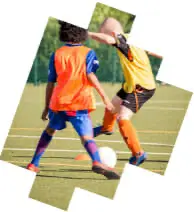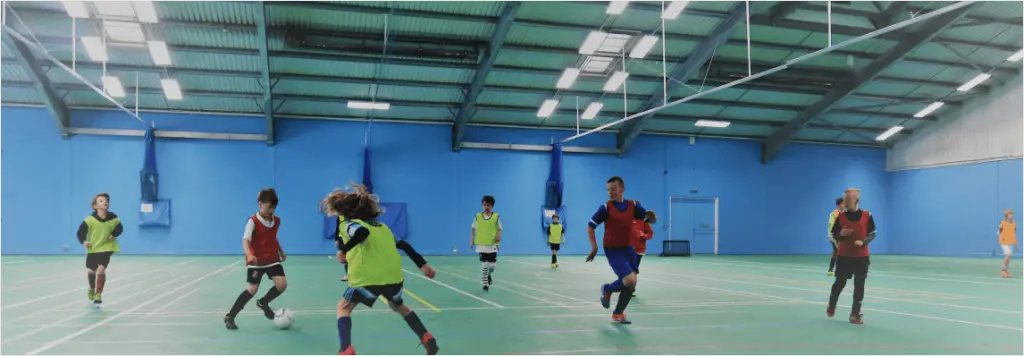Gary Lineker once famously said: “Football is a simple game. 22 men chase a ball for 90 minutes and at the end, the Germans always win.”
That quote isn’t actually true – and not just because the German national side seems to have gone off the boil over the last few years. In fact, football is only played for over 90 minutes in England by those aged 17 and above AND, of course, the women’s game rising participation rates are changing football every day.
For school-age players, the level, the length of games and the number of players on the pitch varies. Here’s how long you can expect your kids to spend on the football pitch in a match situation, depending on their age.
Some of the information below may vary depending on the level at which your child is playing and the FA county in which you are based, but you can use the following as a general rule of thumb:
Mini Soccer
Mini Soccer covers those from Under 7s through to Under 10s, where games consist of two halves of 20 minutes. Players are allowed to play in multiple matches, but their game time must not exceed 40 minutes on any one day for Under 7s and Under 8s and 60 minutes for Under 9s and Under 10s.
In terms of the size of teams, Under 7s begin with five versus five. Under 8s, Under 9s and Under 10s increase to seven-a-side. The whole purpose of Mini Soccer is to introduce young players to the game gently, so smaller pitches allow them more time on the ball and greater opportunities to develop technique. The restrictions on how long each player can take part reduce the risk of burnout.
Under 11s and Under 12s
When children head towards secondary school age, the size of teams increases to nine-a-side. That allows for the introduction to players of the concept of tactics and formations but doesn’t overburden them with the full 11-a-side experience.
Under 11s and Under 12s play 30-minute halves. At this age, they also step up to a size four ball from the size three that they’ve previously been working with. With a bigger ball, more players and increased game time, this is the point where they start to begin their journey towards full football.
Under 13s and Under 14s
At the Under 13s and Under 14s level, game time increases to 35 minutes per half. This is also the point at which 11-a-side football comes in, introducing them to the format that they will be playing for the rest of their careers.
Under 15s and Under 16s
As players enter their final two years of school-age football, they play 40 minutes halves. Why shave just five minutes off each half you may be wondering? Well, 10 minutes off a full game is still a fair chunk of time and again, this is designed to prevent burnout.
These later teenage years are when the body is growing and developing, which can make it vulnerable to overexertion. When you look at it like that, 10 minutes less playing time at the end of a potentially gruelling 80 can make a big difference to a player’s long-term fitness.
With a size five ball introduced at Under 15s, this is the age bracket when players prepare to take their final steps into full football.
Under 17s and Under 18s
Once a player has finished school and enters Under 17s and Under 18s football, virtually all the restrictions are relaxed. From here on in, it’s full 90-minute matches with all the rules that apply in the senior game.
There is just one restriction that remains in place for those playing at Under 17s level and lower, who aren’t allowed to play for over 100 minutes in a single day. Generally, nobody needs to worry about this rule as it only comes into effect for leagues which adopt the use of doubleheaders.
 With a year or two of full football under their belts through these two age groups, players are then ready to join the rough-and-tumble world of adult football.
With a year or two of full football under their belts through these two age groups, players are then ready to join the rough-and-tumble world of adult football.
We hope that you have found the information above helpful. If you’re looking to get your child into team football, take a look at the We Make Footballers player pathways. Your local centre will work with grassroots clubs in your community to help improve the football environment and get players into match football.



